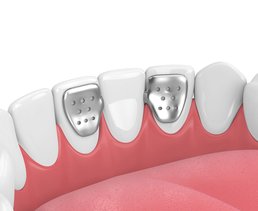
Why Do I Need a Dental Bridge?
The point of many dental procedures is two-fold. The key aspect is to correct some issue that negatively impacts your dental health. The secondary aspect is to improve or at least maintain the appearance of your teeth. Among the different strategies that a dentist may recommend, dental bridges are among the more common solutions. Would a dental bridge make a difference in your case? Here are some examples of what dental bridges can do.
Get Rid of Decayed Teeth
You have teeth that must be extracted. They are past the point of being saved with the use of fillings, crowns, and veneers. The decay has reached a point that the only way to protect your dental health is to remove them.
When one to three of those teeth happen to be next to one another, it makes sense to consider dental bridges as a way to replace them. Bridges are not subject to decay and will last for a long time. From this perspective, they are a great replacement that also helps you eliminate a health risk.
Fill in the Gap
Now that your decayed teeth are gone, what do you think? Do you want to live with the open gap or would you like to fill in the space? If your preference is to fill in the gap, dental bridges in Mississauga are definitely worth considering. This solution doesn’t take long to manage and the results are both attractive and practical.
You may have a question or two about a bridge. For example, is a dental bridge removable? There are more than one design for a bridge. Some are designed to remain in place while others can be removed whenever you like. Your dentist can talk with you about the pros and cons associated with each option.
Restore Your Confidence in Your Smile
You took one look at the gap and immediately felt more self-conscious about your smile. Do you really want to go through life hesitating to smile because of what others may think? Why do that when a simple dental bridges procedure will ensure your smile looks better than it did before you had the decays teeth removed?
That’s right! Your smile may actually look better once the bridge is in place. Instead of teeth that are darkened or unusually shaped because of decay, you now have what appears to be healthy teeth in their place. Best of all, the material used for your bridge is tinted so it matches the hue of the surrounding teeth. What could look more natural?
Chew More Effectively
People don’t realize how difficult it is to chew effectively when there are teeth missing. It’s true that you could spend the rest of your life chewing on the opposite side, but who wants to do that? A better solution is to be fitted for a bridge and have it installed.
Dental bridges are stable enough to make chewing food simple again. Remember that the same precautions you must employ when you chew with real teeth also apply to dental bridges. That means no chewing on ice, biting on hard candies, and chewing on anything that could cause damage. You can bet that if something would chip a tooth, it could also harm the bridge.
Reduce the Risk of Damage to the Surrounding Teeth
While you may think that the threat to the surrounding teeth ended when you have the decayed ones extracted, that’s not the case. Gaps make it all the easier for food to collect in the space. That in turn means more bacteria can collect along the sides as well as the tops of the teeth on each side of the gap. One of the best ways to prevent that from happening is to undergo a tooth bridge procedure and fill in that empty space.
Depending on the type of bridge you choose, the process used to adhere the bridge to the anchor teeth may involve some amount of bonding. When that’s the case, there is no space between the bridge and those teeth for plaque and tartar to collect. Even if you go with a removable bridge that is attached using loops, the spaces are no wider than the normal distance found between natural teeth. You can still keep them clean and avoid the risks associated with a wide gap.
Speak Clearly
Empty gaps left after removing a row of two or three teeth have more of an impact on the ability to speak clearly than most people realize. That’s because not everyone understands how teeth contribute to the formation of works. Teeth create a barrier that the tongue brushes against when enunciating certain words. When the teeth are not there, it takes more effort to pronounce those words.
You will notice a difference as the gap left by the extraction heals. Compare the difficulty in speaking during that period with the ease of speaking once the bridge is in position. You’ll quickly learn that problems with your speech is not among the few dental bridge problems that most people experience.
Faster Solution Than Individual Implants
There are several options to consider when you need to replace natural teeth. Along with dental bridges, your dentist is likely to spend some time talking about individual implants. While both are good choices, there are some reasons why a bridge may be a better option in your case.
One has to do with the time and effort involved with individual implants. There’s the need to insert each implant and then place a temporary cap on each one. While the custom caps are being manufactured, you have a little time to get used to the implants. Once the permanent caps are ready, you will go back and have them installed. Depending on how long it takes for the tissue around the implants to heal, the entire process could take a few weeks.
By contrast, it’s possible to prepare dental bridges in advance and have them ready to install quickly. You may still need to wait a short time for the gum to heal after the extraction, but that’s measured in terms of days rather than weeks. Best of all, it won’t take long to move the custom bridge into position, make sure it’s secure, and let you get back to the rest of your day.
Is a bridge better than an implant? In terms of performance, they are both viable options. Your dentist can go over the benefits and potential drawbacks of each approach and help you decide what would work best in your situation.
A More Affordable Option
Have you asked for a dental bridge cost estimate? How did it compare with estimates for other types of solutions? You will likely find that the only choice with a lower up-front cost is to live with the gap in your teeth.
Why does this matter? If may be less of an issue for people who have some form of dental coverage. There’s a good chance that the dental insurance will take care of the majority of the cost associated with a dental bridge. The same may not be true if you want to get implants instead. Choosing to go with implants may mean paying more of the cost out of your own pocket.
There’s no doubt that people who do not have any form of dental coverage will find bridges to be a more affordable solution. If you have a discount dental plan, that will help with some of the cost. The remainder can be managed using some type of dental loan or maybe a dental line of credit. In any event, you’ll be able to retire the debt sooner if you opt for a bridge.
Bridges Minimize the Potential For Teeth Shifting
What happens when you don’t fill in the gap? Over time, the teeth begin to shift. That’s actually what you want to happen if you had overcrowded molars and had one removed. It’s not what you want to happen when two or three teeth are moved and leave a larger gap.
Shifting teeth are often crooked teeth. Instead of having a gap, you also end up with teeth than lean inward or slightly to the side. Think of what that does to the rest of your smile. If that’s not enough, think of how it’s much harder to chew effectively when your teeth are crooked.
Bridges of all types help to prevent the remainder of the teeth from shifting. How is a bridge attached to teeth? The approach varies based on the kind of bridge you get. In any case, the bridge will help keep the rest of the teeth in the proper position.
You likely have more questions about why you need a bridge and what to expect from the device. Is it painful to get a bridge? How do you take care of a dental bridge? How long will the bridge last? Will people really find it hard to tell the difference? All these questions and more can be answered by a dental professional. Discuss your options with the dentist before making a decision. In the long run, your dental health will be better and your smile will look nicer.

